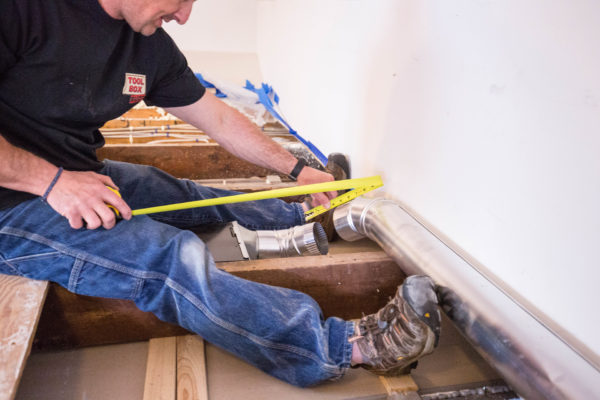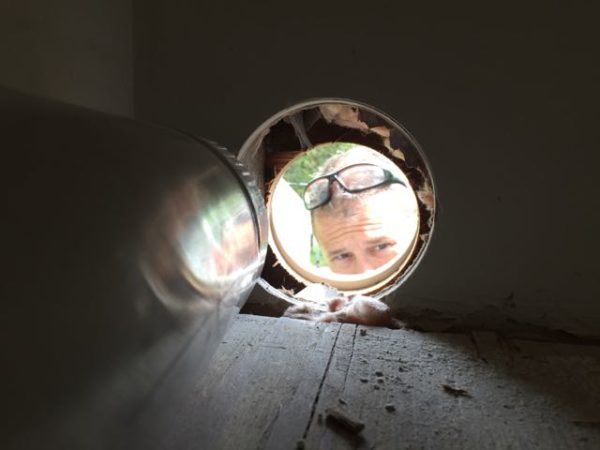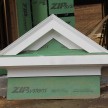The 10 Commandments of Home Construction
The 10 1/2 Project Commandments
Witten by Ralph Mroz
These are the ten and a half commandments that define all home improvement and construction projects. They’ve been learned – often the hard way – over the years by pros, who reflexively build their implications into the estimates and timetables that they give to clients. You could learn them the hard way yourself, but as the old expression goes, “Learning from your mistakes is desirable, but learning from other people’s mistakes is better”.

There are ten and a half commandments in the eleven points below, because one of them (number 4) is more of a general principle than a project rule.
Preparation
Preparation takes 80% of the time and 90% of the effort on any project. By the time you get to do what you really set out to do, the project is almost done…if you did it right. This is probably no where as evident as in painting. The surface prep – removing old materials such as wall paper, sanding, scraping, patching, more sanding, washing, caulking, and so on – seems to go on forever. The actual painting – even multiple coats – goes fast in comparison.
Timing
Everything takes longer than you thought it would. Usually twice as long. No joke. Unless you do the same job day in and day out, you don’t realize how complicated a job can be, or what you’ll run into that you didn’t anticipate (and there’s always something). A pro can usually estimate time frames pretty well, but that’s because he or she builds in buffers to accommodate for these things.
Choosing the Right Tool
The right tool will make any job easy. Buying (or renting) the right tool is almost always the right thing to do from every perspective: time, money, frustration, and emotions. The pros know this. They can usually work around not having the right tool, but they know it’s costing them time (and thus money). And, they have the skills and the understanding to work with a sub-optimal tool and not get frustrated. A DIYer, by contrast, will not only get frustrated by the lack of the right tool, they’ll usually make a mess of the job as a result of its lack, too. (Pros also get frustrated sometimes, but they get paid for their time.)
Quality Tools
Using good tools is a joy. Really, there is something inherently joyful in using a tool that’s well designed and performs well. It excites something fundamental in the brain about man’s distinguishing feature of being able to conceptualize, design, and make an effective, complex tool.
Cost Overruns
Every project costs more than planned. If you can only just barely afford to undertake a project, don’t…wait instead. The pros know this – they don’t take on projects that have to come in on the penny (or on the $100) in order to be profitable. A homeowner will inevitably underestimate the preparation (see #1), the time (see #2), the cost, and the unforeseen (see #9) on a project. If they don’t have a cost buffer, they are up a crick.
Clean Site is A Professional Site
Don’t work in a crowded environment. Take a moment…or a while…to clear the workspace; it pays dividends. It is frustrating, inefficient, unsafe, and the mark of someone who’s not a professional to work in a mess. The pros with the best reputation always keep things pretty orderly. The full timers (they can’t really be called professionals) who allow their environment to become really messy usually have poor reputations.
Clean Up At the End of Day
On a large project, take time daily to pick up, clean up, and organize materials and tools. This is an extension of #6 above. Either last thing or first thing in the work day, organize yourself. Not only will this make the job more pleasant, it will make it safer and more efficient. Plus you won’t lose things, which otherwise happens all the time, and is perhaps the most frustrating common event on a jobsite.
Do Hard / Fussy Work First
If you’re doing dangerous or fussy work and you get tired, quit and come back the next day. Otherwise you’ll either injure yourself or make a mess of the work. Plus you get very inefficient when you’re tired.
Hidden Conditions
On a project where you’re doing something new, realize that you don’t know what you don’t know, and this will cost you time or money or both when what you didn’t know smacks you in the butt. Budget for it. Tens of thousands a time a day throughout the country you’ll hear a professional tradesperson say, “Let’s see what we’re dealing with here.” That’s because whether it’s digging beneath grade, or opening a wall, or squeezing into a crawl space, you usually have to literally seewhat needs to be done in order to understand it — even if you’re doing a task that you’ve done hundreds of times before. If this is true for the pros, it’s 10 times truer for DIYers.
Be Safe
Only chumps ignore safety. Pros know this – the law or large numbers means that there’s literally no pro who hasn’t been injured – a little or a lot – on the job. Pros thus tend to be the most compliant when it comes to safety. If you’re a DIYer, learn from them.
Don’t Be a Cheap Fool
Sometimes inexpensive is good enough, sometimes even more than good enough; but sometimes inexpensive is very expensive. Sometimes all you need is a budget-priced tool if it’s not going to get much use — but if it is, then cheaping out is a fool’s tactic. Materials are even less forgiving – usually cheap materials mean a call back for the pro or a poor finished job for the DIYer. Know what’s what and when’s when, and err on the side of quality.
About the Author
The son of an electrician, Ralph grew up in the trades, literally with a screwdriver in his hand. He worked various construction jobs summers while in high school and college. He absorbed enough from the tradesman that were part of and always around his family to renovate the five homes he and his wife have lived in, while always knowing when it was smart to hire a professional. His favorite tool is the hammer; he really likes hammering nails although he realizes that hardly anyone does anymore.






















